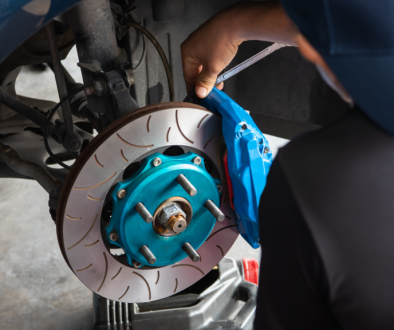In the world of trucking, engine performance is everything. A single malfunction can lead to unexpected breakdowns, costly repairs, and lost productivity. Truck engine diagnostic tools have become indispensable for quickly identifying issues, ensuring compliance with regulations, and keeping vehicles on the road. These tools offer real-time data to pinpoint inefficiencies, fuel wastage, and potential failures before they escalate.
Whether you’re a fleet manager overseeing dozens of trucks or an owner-operator striving for maximum uptime, having the right knowledge and equipment to diagnose engine problems can save thousands of dollars in repairs and downtime.
Understanding Truck Engine Diagnostics
Modern trucks rely on complex electronic systems controlled by Electronic Control Units (ECUs). These ECUs monitor and regulate various engine functions, fuel efficiency, and emissions. When something goes wrong, the ECU records a trouble code, which diagnostic tools can retrieve to help determine the root cause.
Investing in professional-grade diagnostics ensures accuracy and helps avoid misdiagnosing engine problems.
Common Truck Engine Problems Diagnosed by Tools
1. Check Engine Light Activation
The check engine light is often the first sign of trouble. Diagnostic scanners retrieve stored codes that indicate issues such as sensor malfunctions, fuel delivery problems, or misfires. Without a proper scan, guessing at the cause can lead to unnecessary repairs.
2. Fuel System Issues
Poor fuel economy, rough idling, or hard starts could signal fuel system problems. Diagnostic tools check fuel injector performance, fuel pressure levels, and air-to-fuel ratios. Identifying these issues early prevents expensive fuel wastage and injector failures.
3. Emission System Failures
Trucks must comply with EPA emissions standards, and diagnostic tools detect failures in components like:
- Diesel Particulate Filter (DPF)
- Exhaust Gas Recirculation (EGR) valve
- Selective Catalytic Reduction (SCR) system
Ignoring emission issues can lead to fines and poor engine performance. A quick scan can reveal whether cleaning or part replacement is needed.
4. Turbocharger and Boost Pressure Problems
Turbochargers improve power and fuel efficiency but can fail due to boost leaks or sensor malfunctions. Advanced diagnostic tools track boost pressure, air intake efficiency, and wastegate function.
Early detection prevents severe engine damage and costly repairs.
Key Truck Engine Diagnostic Tools
1. OBD-II and HD OBD Scanners
Onboard diagnostics (OBD-II for smaller vehicles, HD OBD for heavy-duty trucks) allow mechanics to retrieve fault codes. A simple plug-in scan can reveal misfires, fuel trims, and oxygen sensor readings, helping diagnose issues quickly.
2. Diesel Laptop Diagnostic Software
Diesel laptop software provides deeper insights into engine data. It allows for live monitoring of injector balance rates, turbo boost levels, and DPF regeneration cycles.
Case Study: A fleet manager noticed excessive fuel consumption in a Freightliner Cascadia. By using diesel laptop diagnostics, they discovered a failing fuel injector and replaced it before it caused further damage.
3. Multi-System Scan Tools
Some tools go beyond the engine and scan transmission faults, electrical system malfunctions, and ABS and brake system errors.
Example: A Peterbilt truck showed erratic shifting behavior. A multi-system scan revealed an ECU communication error between the engine and transmission, leading to a quick fix.
4. Wireless and Remote Monitoring Tools
Fleet operators benefit from remote diagnostics, which continuously monitor real-time engine performance, predictive maintenance needs, and fault alerts before breakdowns occur. This technology prevents unexpected downtime and optimizes fleet efficiency.
Case Studies: Real-World Application of Diagnostic Tools
Case Study 1: Resolving Fuel Injector Failures in a Freightliner Cascadia
Problem: A truck experienced decreased fuel efficiency and rough idling.
Solution: A diagnostic scan detected an imbalance in the fuel injector spray pattern.
Outcome: After replacing the faulty injector, fuel economy improved, saving the fleet thousands annually.
Case Study 2: Diagnosing and Fixing DPF Issues in a Kenworth T680
Problem: A Kenworth truck had frequent DPF regeneration cycles and warning lights.
Solution: A diagnostic tool revealed excessive soot buildup.
Outcome: The DPF was cleaned before permanent damage occurred, avoiding a costly replacement.
DIY vs. Professional Diagnostics: When to Seek Expert Help
Some engine issues can be diagnosed with handheld scanners, but others require professional diagnostics, especially when:
- The problem involves deep engine components like the turbocharger or transmission.
- Electrical faults persist despite repairs.
- Error codes indicate multiple system failures.
FAQs
1. How often should I run engine diagnostics on my truck?
At least once a month or whenever the check engine light appears.
2. Can an OBD-II scanner detect all truck engine problems?
No, advanced issues may require multi-system diagnostic tools or professional analysis.
3. What are the best diagnostic tools for diesel trucks?
Diesel laptops, HD OBD scanners, and multi-system scan tools provide the best coverage.
4. How do I know if my DPF system is failing?
Look for increased regeneration cycles, reduced power, and warning lights on the dashboard.
5. Are wireless truck diagnostic tools reliable?
Yes, they offer real-time data tracking and predictive maintenance alerts for fleet operators.
This guide ensures truck owners and fleet managers have the knowledge to diagnose and fix common engine issues effectively. For more truck repair solutions, explore additional resources.




